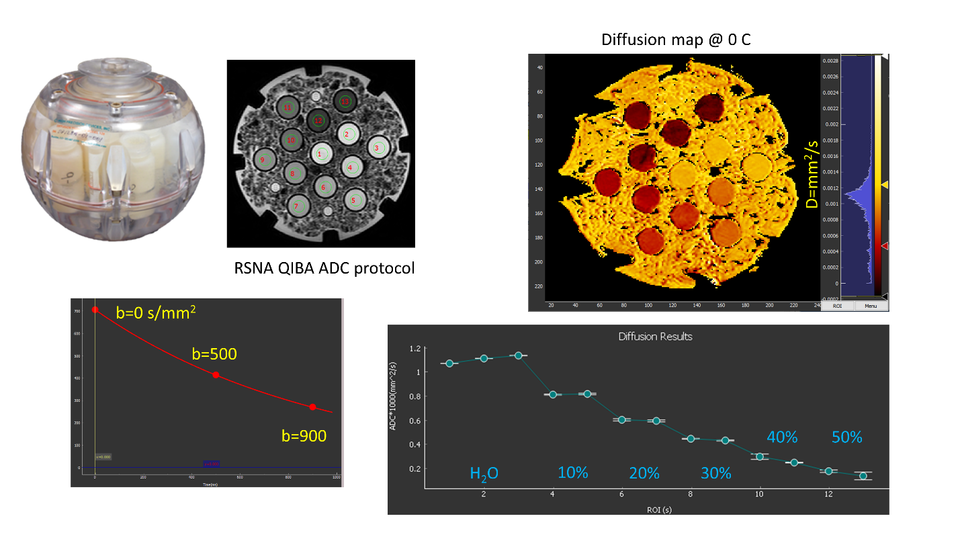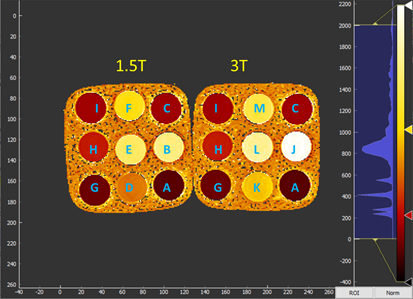Summary
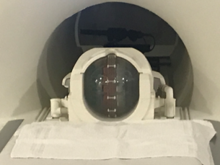
As part of the MRI Biomarker Measurement Service, traceable magnetic resonance imaging (MRI) phantoms are available for loan at a minimal cost, plus shipping. Currently available phantoms include (a full list is below):
- Two copies of the MRI system phantom developed by NIST and the International Society of Magnetic Resonance in Medicine (ISMRM)
- Two copies of the MRI diffusion phantom developed by NIST, the Radiological Society of North America (RSNA), and the National Institutes of Health (NIH)
- One copy of the breast phantom developed by NIST and the University of California, San Francisco
- One copy each of the T1MES 1.5T and 3.0T cardiac phantoms developed by the University College London
Contact MRIStandards [at] nist.gov (MRIStandards[at]nist[dot]gov) to schedule a loan. A 4-6 week loan at each site is suggested and during the initial startup there will be no charge for the loan. Analysis code, sample images, calibration data, and references can be found at https://github.com/MRIStandards/PhantomViewer. A database of imaging sets can be found at https://data.nist.gov/od/id/mds2-2366. Additional phantoms will be added to the lending library as requested by customers, please email MRIStandards [at] nist.gov (MRIStandards[at]nist[dot]gov) to submit requests for additional phantoms.
View Phantom Availability Calendar
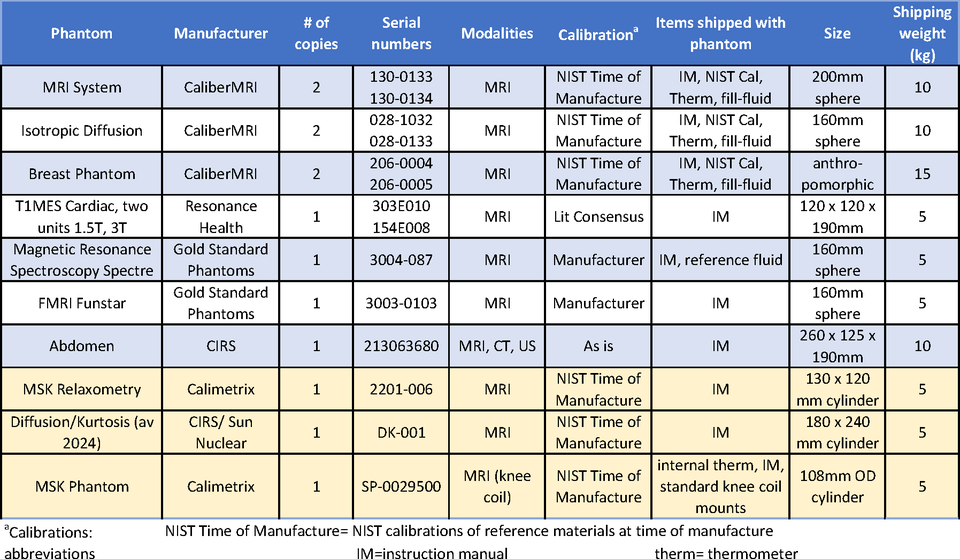
Description
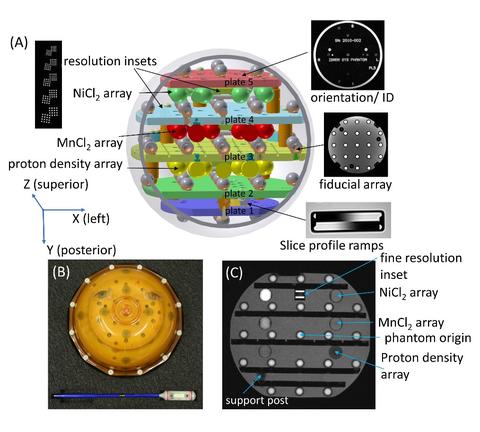
Phantoms are calibration objects that can be used to assess the accuracy, stability, and comparability of medical imaging systems. The NIST/ISMRM MRI system phantom can be used to assess scanner geometric distortion, image uniformity, signal to noise ratio (SNR), resolution, slice profile and thickness, RF-field nonuniformity, and accurate of proton relaxation times (T1, T2) and proton density measurements.
The water self-diffusion coefficient can be an important biomarker of tissue health in both neural and cancer imaging. The diffusion phantom contains several polymer vials with well-defined isotropic water self-diffusion coefficients to determine the accuracy of MRI-based measurements. To obtain precise values for water diffusion, the phantom temperature must be precisely controlled or measured. The phantom can either be operated at 0 C by adding ice, or can be used at typical bore temperatures using the embedded MRI readable thermometer.
